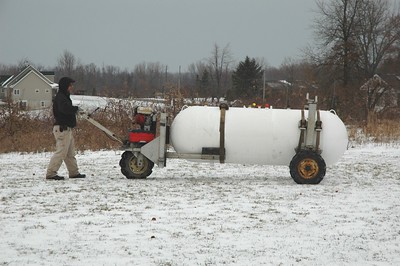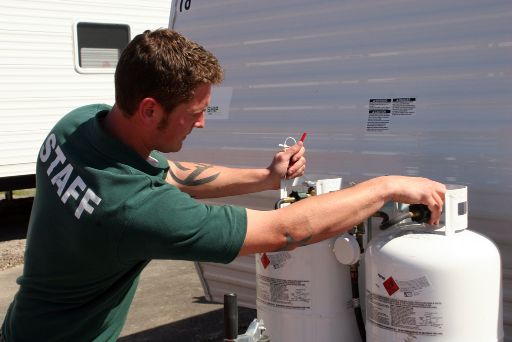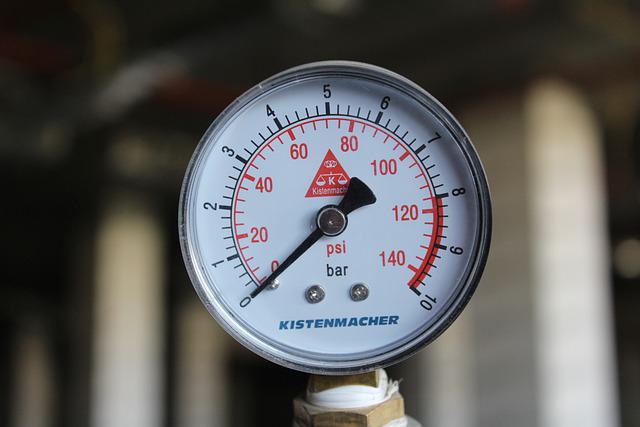
As more and more people turn to propane as a reliable, versatile, and eco-friendly fuel source for residential, commercial, and industrial applications, the need to ship propane tanks safely and efficiently is on the rise.
If you’re among those who need to transport propane tanks, you might be wondering about the costs associated with such a task.
Fret not! In this and detailed article, we’ll dive into the nitty-gritty of propane tank shipping costs, breaking down the factors that influence these expenses and providing you with tips to make the process as cost-effective as possible.
So, grab a cup of coffee, sit back, and keep reading as we embark on this fascinating journey together. Trust us; it’s worth your time!
How Much Really It Is?
The cost of shipping a propane tank varies depending on several factors, including the tank size and weight, shipping distance, mode of transportation, regulations and safety requirements, packaging and handling, shipping insurance, and customs and duties (for international shipments). As a result, it is difficult to provide a specific cost without considering these factors.
For example, shipping a small 20-pound (5-gallon) residential propane tank within the same city might cost between $20 and $50 via a common carrier like UPS or FedEx.
On the other hand, shipping a larger 1,000-gallon commercial propane tank across the country might cost several hundred dollars or more using a specialized freight forwarder or propane tank shipping company. International shipments or shipments involving industrial-sized propane tanks will generally incur even higher costs.
To get a better estimate of the shipping costs for your specific propane tank and destination, it’s best to request quotes from multiple shipping providers and compare their rates, taking into account factors like transit time, insurance, and tracking options.
Types of Propane Tanks
Understanding the various types of propane tanks available is essential before delving into the shipping costs, as size and capacity can significantly influence the expenses. Propane tanks are typically categorized into three main groups: residential, commercial, and industrial.
A. Residential
20-pound (5-gallon) tanks: These small and portable tanks are commonly used for grilling, heating, and other household purposes. They’re easy to handle and transport, making them a popular choice for many homeowners.
33-pound (8-gallon) tanks: Slightly larger than the 20-pound tanks, these are often used for residential applications that require more propane, such as space heating or powering appliances.
100-pound (25-gallon) tanks: Serving as a more substantial propane supply for homes with high fuel demands, these tanks may be used for heating large spaces, whole-house generators, or even swimming pool heaters.
B. Commercial
420-pound (100-gallon) tanks: Typically found at small businesses, these tanks can power commercial-grade appliances and heating systems.
500-gallon tanks: More common in commercial settings, these tanks are suitable for large businesses or multi-unit residential buildings, providing fuel for heating, cooking, or other commercial needs.
1,000-gallon tanks: Large commercial establishments, such as restaurants, hotels, or manufacturing facilities, often use these tanks for their propane requirements.
C. Industrial
30,000-gallon tanks: Ideal for large-scale industrial applications, these tanks are often found at propane distribution centers or fueling stations.
60,000-gallon tanks: These massive tanks are used in extensive industrial operations or bulk storage facilities.
90,000-gallon tanks: The largest of the bunch, these tanks are suitable for colossal industrial complexes with high propane demands or bulk storage hubs.
Factors Affecting Shipping Costs
Several factors come into play when determining the cost of shipping propane tanks. We’ve compiled a list of the most influential elements to help you better understand the expenses involved.
– Tank size and weight: Larger and heavier tanks generally cost more to ship due to the increased logistical challenges, packaging requirements, and handling efforts.
– Shipping distance: The farther the tank needs to travel, the higher the shipping costs. Local shipments are typically more affordable than long-distance or international shipments.
– Mode of transportation: Shipping via ground, air, or sea can significantly impact the cost, with air freight usually being the most expensive option.
– Regulations and safety requirements: Propane tanks are subject to stringent regulations and safety standards, which can increase shipping costs due to specialized handling, labeling, and packaging requirements.
– Packaging and handling: Proper packaging and handling of propane tanks are crucial to ensuring their safe transit, which can add to the overall shipping costs.
– Shipping insurance: Depending on the value of the propane tanks and the potential risks involved, shipping insurance may be necessary, which can add to the overall cost.
– Customs and duties (for international shipments): When shipping propane tanks across borders, additional customs fees and import/export duties may apply, increasing the total expense.
Shipping Providers
Various shipping providers can help you transport propane tanks, each with its pros and cons. Knowing your options can help you make the best decision for your needs and budget.
Common carriers (e.g., UPS, FedEx, DHL): These companies often handle smaller propane tanks, such as those used for residential purposes. They provide convenient shipping options but may not be suitable for large or oversized tanks.
Freight forwarders: These companies specialize in organizing and coordinating the shipping process for larger items, including propane tanks. They can help you navigate complex shipping regulations, find cost-effective transportation methods, and handle customs clearance.
Specialized propane tank shipping companies: Some shipping providers focus exclusively on propane tanks and related equipment. They have the expertise and resources to handle the unique challenges of transporting these items, but their services may come at a premium.
Local propane suppliers: In some cases, local propane suppliers may offer delivery and installation services for their customers, which can be an affordable and convenient option for obtaining propane tanks.
How to Save on Propane Tank Shipping Costs
Shipping propane tanks can be expensive, but there are ways to reduce costs without compromising safety or convenience. Here are a few tips to help you save on propane tank shipping:
Compare rates among multiple providers: Obtain quotes from various shipping providers to find the best deal. Consider factors like transit time, insurance, and tracking options in addition to the base shipping rate.
Choose the most economical shipping method: Ground shipping is often the most affordable option, especially for large and heavy propane tanks. However, consider the urgency of your shipment and weigh the trade-offs between cost and speed.
Ship in bulk when possible: If you need to ship multiple propane tanks, consolidating them into a single shipment can often reduce the cost per tank.
Utilize regional propane tank suppliers: Sourcing propane tanks from suppliers closer to your location can reduce shipping distances and associated costs.
Take advantage of seasonal discounts and promotions: Shipping providers may offer special rates or promotions during certain times of the year. Keep an eye out for these deals to save on your propane tank shipping costs.
Shipping Propane Tanks Internationally
When shipping propane tanks across international borders, there are additional considerations to keep in mind.
Overview of international shipping regulations: Familiarize yourself with international shipping regulations and safety standards to ensure your shipment complies with all necessary rules.
Import/export requirements: Research the import and export requirements for the countries involved, including necessary permits, documentation, and inspections.
Additional fees and taxes: Be prepared to pay any applicable customs fees, import duties, and taxes when shipping propane tanks internationally.
Special considerations for shipping propane tanks overseas: When shipping propane tanks by sea, ensure that they are properly secured and packaged to withstand the rigors of ocean transport.
Conclusion
Navigating the world of propane tank shipping costs may seem daunting, but with a thorough understanding of the factors at play, you can make informed decisions that save you money without sacrificing safety or convenience.
By comparing shipping providers, choosing cost-effective methods, and taking advantage of available discounts, you can minimize the expenses involved in transporting propane tanks.
Now that you have all the information you need, don’t hesitate to dive deeper into the world of propane tank shipping! Whether you’re a homeowner seeking a new fuel source, a business owner looking to expand, or an industrial giant striving for efficiency, understanding shipping costs is crucial to your success. Happy shipping!

Mike is an experienced propane technician with over 15 years of professional experience in the field. He has dedicated his career to helping customers with their propane needs, from installation to maintenance and repair. Together with Jeremy, he co-founded this website to provide useful information and guidance to customers seeking reliable propane services.




